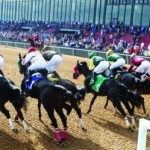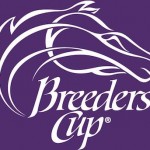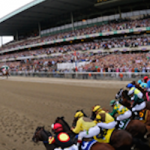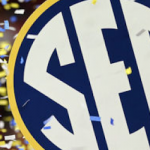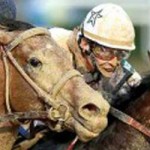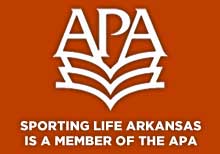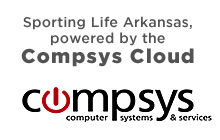
In the days before simulcasting, Instant Racing and “electronic games of skill,” Oaklawn Park at Hot Springs advertised its live race meet as The Fifth Season.
It was a fitting moniker.
For years, Oaklawn has been what’s known in the business as a destination track – a place to bring your friends and family members for the day, perhaps even for a short vacation.
As thoroughbred racing struggles to halt a decline in its fan base, there are precious few destination tracks remaining in America. Saratoga in upstate New York is one. Del Mar in southern California is another. Kenneland at Lexington, Ky., is yet another.
Churchill Downs at Louisville is a destination track only during the week of the Kentucky Derby. Pimlico at Baltimore, which has struggled in recent years to keep its doors open, is a destination track only on the day of the Preakness Stakes each May.
I lived in Washington, D.C., for several years during the 1980s, working as a correspondent for the Arkansas Democrat. I often would make the short trip up to Baltimore on fall Saturdays with a fellow racing enthusiast named Jim East, who was the Washington correspondent for the Tulsa Tribune, a newspaper that no longer exists. The Pimlico complex, situated in a rough inner-city neighborhood, would be almost empty on those fall Saturdays. You could hear the discarded pari-mutuel tickets rustle whenever the wind blew. In a sense, it was a sad place.
Oaklawn no longer uses The Fifth Season in its advertising campaigns. Now it attempts to be a destination 12 months a year. To be honest, I have no real desire to be there when the horses aren’t running. I could care less about video games. A previous job with the Delta Regional Authority often found me attending meetings at the Tunica casinos since those facilities had the best meeting rooms in the Delta. My wife would ask, “Did you play any games?” I always would tell her “no.” I do like the steakhouses one finds in a casino. I always figured I could get a better return on my investment by spending my dollars on a shrimp cocktail and a porterhouse.
I’m one of those rare people who can enjoy a full racing card without placing bets. I like to watch thoroughbreds compete. I enjoy watching the jockeys ply their trade. I’m fascinated by the backgrounds of the various owners. I love seeing the colorful characters one finds at the track. When I was a newspaper sportswriter, I could find more good stories at the track than anywhere else.
I’m glad the video games are doing well at Oaklawn. You won’t find me in the gaming room. I no longer can stand to be around people smoking cigarettes. But the success of those video games means purses are much higher than they otherwise would be when the horses are on the track at Oaklawn each January, February, March and April. Higher purses translate into better horses. I’m thrilled that Oaklawn has become one of the best places in the country to watch 3-year-olds prep for the Triple Crown.
My friend David Longinotti, who now runs the racing side of things at Oaklawn, once put it this way: “The focus of our season is the 3-year-old racing. It’s kind of the focus of the racing world as horses prepare for the Kentucky Derby, and we think this is the best place in the country to do that.”
Yes, the word is out among trainers: Hot Springs is as good a place as any – and better than most – to prep horses in the winter and early spring. There were those of us who once thought the Oaklawn “glory days” were in the late 1970s and the early 1980s. I’m not sure that these aren’t the glory days.
The 2013 Oaklawn race meet begins Friday, and there’s no chance for snow or ice. Oaklawn’s opening weekend traditionally is a magnet for ice, snow or at least temperatures so low that the track freezes. The main problem this time will be some weekend rain.
I enjoy places with a colorful history, and Oaklawn has it in spades. Racing began there in February 1905. Hot Springs Mayor John Belding declared that first afternoon of racing a holiday, and almost 3,000 people turned out. The track closed after the 1907 meeting due to political differences with state officials. By 1916, racing had resumed, original owners Dan Strut and John Condon were dead and Louis Cella of St. Louis was the owner.
In 1918, Cella died at age 51 in St. Louis following a stroke. His brother, Charles, and two partners continued to operate Oaklawn and several other tracks. In October 1940, Charles Cella died in St. Louis at age 65. His son, John G. Cella, took over the track. John’s son, Charles J. Cella, was age 4 at the time.
During almost three decades of track ownership, John Cella provided stability for Oaklawn, developing strong relationships in the Arkansas business and political communities. He saw to it that Oaklawn was a charter member when the Thoroughbred Racing Association was formed in 1942. Spring racing was suspended under his watch in 1945 due to World War II, but he put on a fall meeting that year to celebrate the war’s end. In the years after the war, purse distribution soared and attendance steadily increased.
The Cella family’s investments in the entertainment business were diversified. At one time, the family owned 48 theaters.
“I frankly had more interest in the theater than in racing,” Charles J. Cella told me several years ago. “Unfortunately, by the time I came of age, both racing and live theater were headed south as businesses. Television hurt live theater, and casino gambling hurt racing.”


